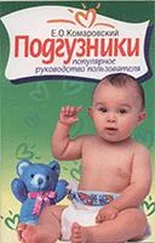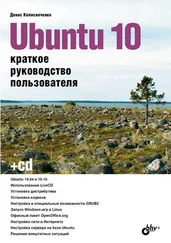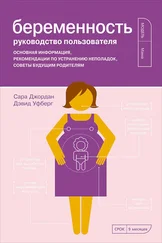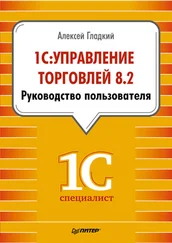R. Maughan, “Wedge Wolf Pack Will Be Killed because of Its Increasing Beef Consumption,” The Wildlife News , September 28, 2012, http://www.thewildlifenews.com/2012/09/22/wedge-wolf-pack-will-be-killed-because-of-increasing-beef-consumption.
D. Tilman and M. Clark, “Global Diets Link Environmental Sustainability and Human Health,” Nature 515, no. 7528 (November 2014): 518–522.
E. F. Taylor et al., “Meat Consumption and Risk of Breast Cancer in the UK Women’s Cohort Study,” British Journal of Cancer 96, no. 7 (2007): 1139.
D. D. Alexander et al., “A Review and Meta-analysis of Red and Processed Meat Consumption and Breast Cancer,” Nutrition Research Reviews 23, no. 2 (2010): 349–365.
V. Bouvard et al., “Carcinogenicity of Consumption of Red and Processed Meat,” The Lancet Oncology 16, no. 16 (2015): 1599.
M. Inoue‐Choi et al., “Red and Processed Meat, Nitrite, and Heme Iron Intakes and Postmenopausal Breast Cancer Risk in the NIH‐AARP Diet and Health Study,” International Journal of Cancer 138, no. 7 (2016): 1609–1618.
“Animal Foods,” World Cancer Research Fund International, открыто 14 октября 2017 года, http://www.wcrf.org/int/research-we-fund/cancer-prevention-recommendations/ animal-foods.
R. Sinha et al., “Meat Intake and Mortality: A Prospective Study of over Half a Million People,” Archives of Internal Medicine 169, no. 6 (2009): 562–571; S. Rohrmann et al., “Meat Consumption and Mortality: Results from the European Prospective Investigation into Cancer and Nutrition,” BMC Medicine 11, no. 1 (2013): 63.
A. J. Cross et al., “A Prospective Study of Red and Processed Meat Intake in Relation to Cancer Risk,” PLoS Medicine 4, no. 12 (December 2007): e325.
H. Davoodi, S. Esmaeili, and A. M. Mortazavian, “Effects of Milk and Milk Products Consumption on Cancer: A Review,” Comprehensive Reviews in Food Science and Food Safety 12, no. 3 (2013): 249–264.
P. W. Parodi, “Dairy Product Consumption and the Risk of Breast Cancer,” Journal of the American College of Nutrition 24, no. 6 (December 2005): 556S–568S; W. Al Sarakbi, M. Salhab and K. Mokbel, “Dairy Products and Breast Cancer Risk: A Review of the Literature,” International Journal of Fertility and Women’s Medicine 50, no. 6 (November – December 2005): 244–249; P. G. Moorman and P. D. Terry, “Consumption of Dairy Products and the Risk of Breast Cancer: A Review of the Literature,” American Journal of Clinical Nutrition 80, no. 1 (July 2004): 5–14; M. H. Shin et al., “Intake of Dairy Products, Calcium, and Vitamin D and Risk of Breast Cancer,” Journal of the National Cancer Institute 94, no. 17 (September 2002): 1301–1311.
H. Davoodi, S. Esmaeili, and A. M. Mortazavian, “Effects of Milk and Milk Products Consumption on Cancer: A Review,” Comprehensive Reviews in Food Science and Food Safety 12, no. 3 (2013): 249–264.
M. H. Shin et al., “Intake of Dairy Products, Calcium, and Vitamin D and Risk of Breast Cancer,” Journal of the National Cancer Institute 94, no. 17 (2002): 1301–1310.
C. H. Kroenke et al., “High-and Low-Fat Dairy Intake, Recurrence, and Mortality after Breast Cancer Diagnosis,” Journal of the National Cancer Institute 105, no. 9 (2013): 616–623.
D. Ganmaa and A. Sato, “The Possible Role of Female Sex Hormones in Milk from Pregnant Cows in the Development of Breast, Ovarian and Corpus Uteri Cancers,” Medical Hypotheses 65, no. 6 (2005): 1028–1037.
D. A. Pape-Zambito, R. F. Roberts, and R. S. Kensinger, “Estrone and 17κ-estradiol Concentrations in Pasteurized-Homogenized Milk and Commercial Dairy Products,” Journal of Dairy Science 93, no. 6 (2010): 2533–2540.
S. Stender and J. Dyerberg, “Influence of Trans Fatty Acids on Health,” Annals of Nutrition and Metabolism 48, no. 2 (2004): 61–66.
A. Trichopoulou et al., “Consumption of Olive Oil and Specific Food Groups in Relation to Breast Cancer Risk in Greece,” Journal of the National Cancer Institute 87, no. 2 (1995): 110–116.
J. R. Hebert, T. G. Hurley, and Y. Ma, “The Effect of Dietary Exposures on Recurrence and Mortality in Early Stage Breast Cancer,” Breast Cancer Research and Treatment 51, no. 1 (September 1998): 17–28; A. J. McEligot et al., “Dietary Fat, Fiber, Vegetable, and Micronutrients Are Associated with Overall Survival in Postmenopausal Women Diagnosed with Breast Cancer,” Nutrition and Cancer 55, no. 2 (2006): 132–140.
D. Doell et al., “Updated Estimate of Trans Fat Intake by the US Population,” Food Additives and Contaminants: Part A 29, no. 6 (2012): 861–874.
I. Laake et al., “A Prospective Study of Intake of Trans-Fatty Acids from Ruminant Fat, Partially Hydrogenated Vegetable Oils, and Marine Oils and Mortality from CVD,” British Journal of Nutrition 108, no. 4 (2012): 743–754.
D. Mozaffarian et al., “Trans Fatty Acids and Cardiovascular Disease,” New England Journal of Medicine 354, no. 15 (2006): 1601–1613.
J. M. Beasley et al., “Post-diagnosis Dietary Factors and Survival after Invasive Breast Cancer,” Breast Cancer Research and Treatment 128, no. 1 (2011): 229–236.
A. C. Thiebaut et al., “Dietary Fat and Postmenopausal Invasive Breast Cancer in the National Institutes of Health-AARP Diet and Health Study Cohort,” Journal of the National Cancer Institute 99, no. 6 (March 2007): 451–462.
Y. Liu et al., “Adolescent Dietary Fiber, Vegetable Fat, Vegetable Protein, and Nut Intakes and Breast Cancer Risk,” Breast Cancer Research and Treatment 145, no. 2 (2014): 461–470.
Division of Cancer Control and Population Sciences, “Top Food Sources of Saturated Fat Among US Population,” National Cancer Institute, последнее обновление 20 апреля 2016 года, https://epi.grants.cancer.gov/diet/foodsources/sat_fat/sf.html.
A. P. Simopoulos, “Evolutionary Aspects of Diet, the Omega-6/Omega-3 Ratio and Genetic Variation: Nutritional Implications for Chronic Diseases,” Biomedicine and Pharmacotherapy 60, no. 9 (2006): 502–507.
M. Hansen et al., “Potential Public Health Impacts of the Use of Recombinant Bovine Somatotropin in Dairy Production,” Consumers Union, September 1997, http://consumersunion.org/news/potential-public-health-impacts-of-the-use-ofrecombinant-bovine-somatotropin-in-dairy-production-part-1.
R. P. Heaney et al., “Dietary Changes Favorably Affect Bone Remodeling in Older Adults,” Journal of the American Dietetic Association 99, no. 10 (1999): 1228–1233.
Читать дальше
![Кристи Фанк Грудь. Руководство пользователя [litres] обложка книги](/books/392018/kristi-fank-grud-rukovodstvo-polzovatelya-litre-cover.webp)











